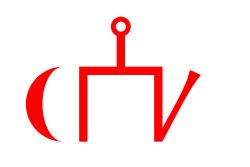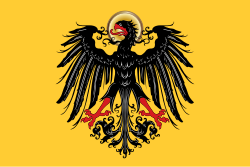Polsko-litevská válka s Řádem německých rytířů
| Polsko-litevská válka s německými rytíři | |||
|---|---|---|---|
| konflikt: Litevská křížová výprava | |||
 Bitva u Grunwaldu, Jan Matejko | |||
| Trvání | 6. srpna 1409 – 1. února 1411 | ||
| Místo | Stát Řádu německých rytířů | ||
| Výsledek | První toruňský mír, porážka a úpadek řádu | ||
| Strany | |||
| |||
| Velitelé | |||
| |||
| Některá data mohou pocházet z datové položky. | |||
Polsko-litevská válka s Řádem německých rytířů neboli Polsko-litevská válka s křižáky, či též Velká válka, byl ozbrojený konflikt, který probíhal mezi lety 1409 a 1411 mezi Polským královstvím a Litevským velkovévodstvím na straně jedné a Řádem německých rytířů a jeho spojenci na straně druhé.
Na počátku války byla dvě žmuďská povstání. Žmuďané byli etnikum žijící na území dnešní Litvy, které litevský velkovévoda Vytautas daroval německým rytířům výměnou za vojenskou pomoc. První povstání proběhlo v letech 1401–1404. Rytíři jej potlačili a Vytautas nevyslyšel volání povstalců o jeho pomoc. Druhé povstání započalo roku 1409. Řád nabyl dojmu, že povstání získalo polskou podporu a rozhodl se do Polska v srpnu 1409 podniknout invazi. Na polskou stranu pak přešel i Vytautas. Protože však ani jedna strana nebyla připravena na válku v plném rozsahu, český král Václav IV. zprostředkoval devítiměsíční příměří. Po jeho vypršení, v červnu 1410, byli němečtí rytíři rozhodným způsobem poraženi v bitvě u Grunwaldu, jedné z největších bitev středověké Evropy. Většina vůdců řádu byla v bitvě zabita nebo zajata. Navzdory tomu zbytek německých rytířů v druhé půlce roku 1410 vydržel obléhání na svém hlavním hradě Malbork, v důsledku čehož pro řád První toruňský mír z roku 1411 neznamenal zásadní územní ztráty (musel se vzdát Žmudi na úkor Litvy a Dobrzyňska na úkor Polska).
Územní spory trvaly až do roku 1422, kdy byla podepsána nová mírová smlouva u jezera Melno. Rytíři však už nikdy neobnovili svou dřívější moc a finanční břemeno válečných reparací způsobilo hospodářský úpadek v jejich zemích. Válka pohnula s mocenskými vahami ve střední Evropě a předznamenala vzestup Polska (posléze Polsko-litevské unie) na pozici dominantní mocnosti v regionu.[1]
Reference
V tomto článku byl použit překlad textu z článku Polish–Lithuanian–Teutonic War na anglické Wikipedii.
- ↑ STONE, Daniel. The Polish-Lithuanian State, 1386-1795. [s.l.]: University of Washington Press 404 s. Dostupné online. ISBN 978-0-295-98093-5. (anglicky) Google-Books-ID: LFgB_l4SdHAC.
Média použitá na této stránce
Autor: J a1, Licence: CC BY-SA 3.0
Banner of Kazimierz, duke of Pomerania - Szczecin in battle of Grunwald (1410)
Autor: J a1, Licence: CC BY-SA 3.0
Banner of en:Duchy of Oleśnica in battle of Grunwald (1410)
Autor: Samhanin, Licence: CC BY 3.0
Banner of the Kingdom of Poland during the Jagellonians.
Husitská korouhev podle iluminací v kodexech Jenského a Göttingenského z 15. století
Autor: No machine-readable author provided. J a1 assumed (based on copyright claims)., Licence: CC BY-SA 3.0
Autor: J a1, Licence: CC BY-SA 3.0
Banner of Bishopric of Chełmno in battle of Grunwald (1410)
Autor: Poznaniak, Licence: CC BY-SA 2.5
Chorągiew księcia mazowieckiego Siemowita z okresu bitwy pod Grunwaldem, 1410
Flag of WKL (13th-14th c.)
Autor: User:N3MO
User:Artemis Andromeda, Licence: CC BY-SA 4.0
Coat of arms of Pomerania-Stargard
Flag of the State of the Teutonic Order
Coat of arms of the Belz principality
Autor: Alex Tora, Licence: CC BY 3.0
Flags of Ruthenian lands in the battle of Tannenberg, 1410.
Ян Матэйка. «Грунвальдская бітва» (1878)
Autor: Vorziblix, Licence: CC0
The flag of the Golden Horde, as shown in Angelino Dulcert's 1339 map. A similar flag appears in the later Catalan Atlas (1375), providing corroboration.
See also Early Mongol Flags at crwflags.com:
- One of the charges is a crescent and the other looks like a simplified form of the tamga from the flag of Idel Ural. On different copies of the flag, the crescent has different size; it is often smaller than shown here, sometimes even reduced into a simple oblique stroke and conjoined with the other charge into a si[n]gle symmetrical object; the other charge also sometimes lacks the oblique part [2, 3]. It was obviously difficult to draw the charges always the same way. The cities with this flag which are easy to identify are [2, 7, 8]: Sarai, the capital (spelled Sarra) - there is also a depiction of the ruler, "Jani Beg Lord of Sarai" ("Jambech senyor de Sarra"); Tana, present-day Azov, Russia; and Urgench, Uzbekistan (spelled Organci, with a cedilla under the c; nowadays ruined). This flag is a variant of the flag of "Emperor of Sarai" ("Emperador de Sara") from "Libro del conoscimiento de los reinos" [7] and might be the one that had really existed, considering the similarity of its charges with those from the flag of Idel Ural.
- [2] Enciclopedia universal ilustrada, vol. XXI, Espan~a Madrid: Espasa-Calpe S.A., 1968
- [3] Istorija otkric'a i istraz<ivanja, vol. I: Poc<etak istraz<ivanja; Mladinska knjiga, Ljubljana, 1979; Original title: A History of Discovery and Exploration, vol. I: The Search Begins;(C) 1973 Aldus Books Limited, London
- [7] Libro del Conoscimiento. Viajes medievales, vol. I Madrid: Fundacio'n Jose' Antonio de Castro, 2005 ISBN 84-96452-11-5 (complete edition) ISBN 84-96452-12-3 (vol. I) [e9s50]
- [8] A[p]pendices. (Ibid.)
- Tomislav Todorovic, 21 April 2007
Autor: J a1, Licence: CC BY-SA 3.0
Banner of bishopric of Warmia in battle of Grunwald (1410)
Anachronistic representation of the royal banner of the 12th(?) or 13th to early 15th centuries.
The banner of this period would be square in shape, and the eagle would not have a halo.
The black eagle in a golden field was the ensign of the German kings (as opposed to the emperor) in the 12th and 13th century, but in the 14th century, it was gradually re-interpreted as representing the empire. An early reference to such a banner as "imperial" is made in an account of the burial of Charles IV (d. 1378), as der schwartz adler des richs in einem guldin veld .Flags of Ruthenian lands in the battle of Tannenberg, 1410.
Autor: J a1, Licence: CC BY-SA 3.0
Banner of bishopric of Sambia and city and commandry of Ragnit in battle of Grunwald (1410)
Battle Flag of Moldavia in Battle of Obertyn (22 August 1531). Drawn after Image:Modovian army Polski Kronika from 1564.jpg
Autor: J a1, Licence: CC BY-SA 3.0
Second banner of Great Master of Teutonic Order in Battle of Grunwald
State Banner of Denmark or the Dannebrog, drawn from the Wapenboek Gelre.





















